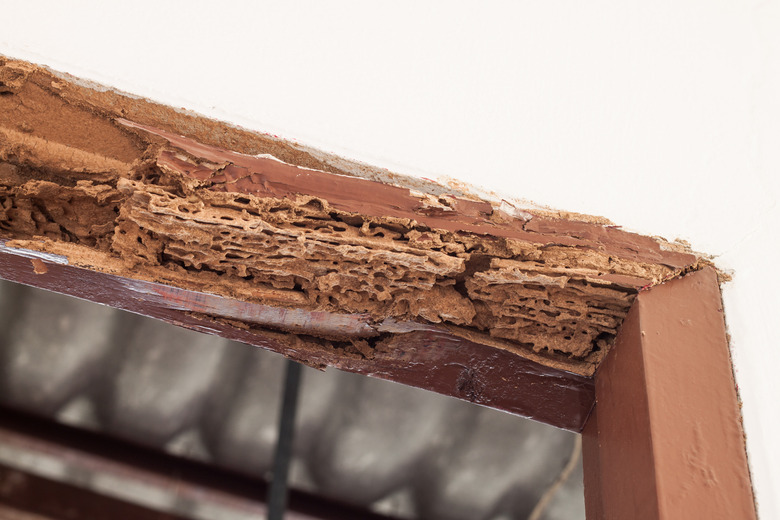Insects That Eat Wood
There are several types of insects and a wide variety of species that actively consume wood. Some of these wood-eating bugs pose major threats to property and forests, especially if they exist as an invasive species. However, not all bugs that cause damage to wood actually eat it. It takes a highly specialized physiology to digest wood as a primary form of nutrition.
Termites
Termites
Termites are among the most well-known of the wood-eating insects. Due to a symbiotic relationship with a strain of bacteria in their gut, they are able to eat and digest wood. They are responsible for consuming detritus and deadfall in nature, providing an essential service to the ecology. However, when they come into contact with wooden buildings, they can cause expensive damage, and even weaken the supports of a house to a dangerous extent.
Wood-Boring Beetles
Wood-Boring Beetles
Unlike termites, wood-boring beetles attack living trees as well as seasoned timber. While this does not prevent them from boring into and damaging buildings, it does make them a potentially catastrophic threat to forests if they are introduced as an invasive species. It is actually the larval form of the beetle that bores into and devours wood. They spend most of their life cycle chewing tiny tunnels through wood, only existing as adult beetles for long enough to mate and lay eggs.
Horntail Wasps
Horntail Wasps
While horntail wasps only attack living trees, their larva may lie dormant in the wood long enough for it to be made into lumber, causing minor damage when they emerge as adults. They devour wood as larvae with the help of a symbiotic fungus. The female wasp lays eggs in the wood of a living tree, injecting a form of fungus with her stinger at the same time. While the eggs develop into larvae, the fungus digests the wood into a form the larvae can eat. When they hatch, they are surrounded by a meal ready to eat and a clear path to the outside world.
Carpenter Ants and Carpenter Bees
Carpenter Ants and Carpenter Bees
Contrary to popular belief, carpenter ants and carpenter bees do not eat wood. Carpenter bees eat nectar, just like any other bee. Carpenter ants have as broad a diet as any other species of ant, but they lack the termite's ability to break down cellulose into digestible starches. Instead, they use wood as a place to build a nest, tunneling into the wood of dead trees and buildings just as other ants tunnel into dirt.
Cite This Article
MLA
Clay, Charles. "Insects That Eat Wood" sciencing.com, https://www.sciencing.com/bugs-eat-wood-8356466/. 22 November 2019.
APA
Clay, Charles. (2019, November 22). Insects That Eat Wood. sciencing.com. Retrieved from https://www.sciencing.com/bugs-eat-wood-8356466/
Chicago
Clay, Charles. Insects That Eat Wood last modified March 24, 2022. https://www.sciencing.com/bugs-eat-wood-8356466/
